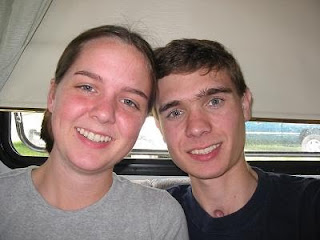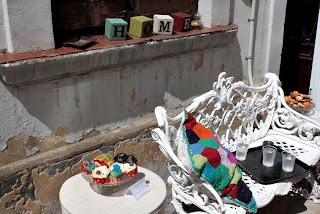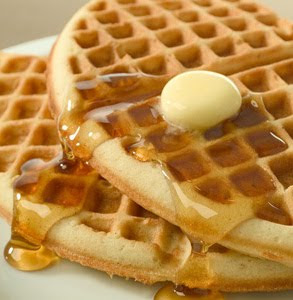 Falafels in Toronto are sort of a holy grail for me. Nearly every one I've had has been a disappointment. Either the falafels are too dry, mushy or just not very good (which isn't exactly a surprise when almost all of them seem to start off as frozen patties). And then there's the filling - most have too much lettuce and not nearly enough vegetables, hummus or tzatziki which can result in an extremely dry sandwich. I know there must be good falafel places in the city but most of the better ones are further away than I'm generally willing to venture, especially if there's a chance it will disappoint.
Falafels in Toronto are sort of a holy grail for me. Nearly every one I've had has been a disappointment. Either the falafels are too dry, mushy or just not very good (which isn't exactly a surprise when almost all of them seem to start off as frozen patties). And then there's the filling - most have too much lettuce and not nearly enough vegetables, hummus or tzatziki which can result in an extremely dry sandwich. I know there must be good falafel places in the city but most of the better ones are further away than I'm generally willing to venture, especially if there's a chance it will disappoint.My problem runs a little deeper here in that I have a "perfect" falafel in my memory...and it isn't from Toronto, or even Canada. Two summers ago I had the most mind-blowingly delicious falafel at L'As Du Falafel in Paris. Their falafels, freshly deep fried from due to the high volume of customers, were crispy but still amazingly moist and tender on the inside. The liberal amounts of tahini and tzatziki and the thinly sliced cucumber matchsticks kept the sandwich from being dry (in fact it was dripping). The saddest part of all this was the fact that I didn't even get my own falafel on this occasion. We had gone late at night after the bar and I wasn't very hungry so shared one with Rue. Big mistake. This falafel literally haunts my dreams.
Anyway, all this means that I'm going to be pretty hard-pressed to find a truly satisfactory falafel even with lowered expectations. I had been avoiding falafel recipes for months for this reason exactly, but recently I realized that I was more often disappointed in the filling options and hummus/tzatziki-to-pita ratio than the patties themselves. Which is actually quite easily remedied by an at-home falafel!

This recipe is a bit different from most homemade falafel recipes in that it a) uses canned vs. dried chickpeas and b) the falafels are baked. I'm planning to try using dried chickpeas next time but I actually thought that the texture from the canned version was more than satisfactory considering it doesn't require 24 hours of soaking. I also pan fried these for our meal but ended up baking the leftovers as I noticed that they weren't quite as crispy as I had hoped. I'm not sure if this means I wasn't pan frying at a high enough heat (I haven't figured out the science of pan-frying temperatures yet) or that the patties themselves had too much moisture but I thought that baking might help. The baked version were definitely more crispy but also drier on the inside. I think that ultimately I preferred the pan fried version but I might just need to experiment with the heat/oil levels next time. I can totally see why deep frying is the "preferred" method for falafel making - seems to be the only way to truly get the crispy, crunchy exterior with a moist and soft interior. Both the other methods were still delicious and an improvement over the lacklustre falafels I've had lately. They also freeze extremely well, though it wasn't necessary in my case - I ate them as leftovers for two days of lunches and for dinner again later in the week. These are going to be a regular addition to my dinner options for sure!
Homemade Falafel
Adapted from theKitchn and Chow Vegan
Makes about 22 balls
1 15 oz can garbanzo beans

About half a white onion, finely chopped (about 1 cup)
1 medium carrot, peeled and finely grated
3 cloves garlic, finely chopped
3 tablespoons fresh parsley, chopped
Juice of half a lemon
1 tsp olive oil
1 tsp coriander
1 tsp cumin
1/2 tsp dried red pepper flakes
Dash of chilli powder
1/2 cup of panko bread crumbs
1 tsp baking powder
Salt and pepper to taste
1. Drain and rinse the garbanzo beans. Put in a medium sized bowl and smash with a fork or potato masher. I actually slightly "pulsed" using my immersion blender as I wanted a bit of a finer mixture but don't have a food processor. Add the rest of the ingredients (but only 1/4 cup of the panko crumbs) and mix well.
2. Form into small balls, about 1 1/2″ in diameter and slightly flatten. Lightly bread patties in remaining panko crumbs, if desired. Press slightly into the crumbs so that they stick to the falafels.
To pan-fry:
3. Heat a large cast-iron skillet (or regular frying pan) on medium heat. Fry patties in canola or olive oil (I used a combination of the two) for about 5 minutes per side, until they are nicely browned. Drain on a paper towel lined plate.
To bake:
3. Preheat oven to 375 degrees Farenheit, 185 degrees Celsius. Place patties onto an oiled baking pan and bake for 15 minutes. After 15 minutes flip patties, add some more oil to the baking pan and give the pan a shake to re-coat. This will help the falafels brown nicely on the other side as well.
4. Eat in a pita pocket with hummus, tzatziki, tomatoes and cucumber. You can freeze your leftovers to have on another day if you're so fortunate as to have that many left over.


































